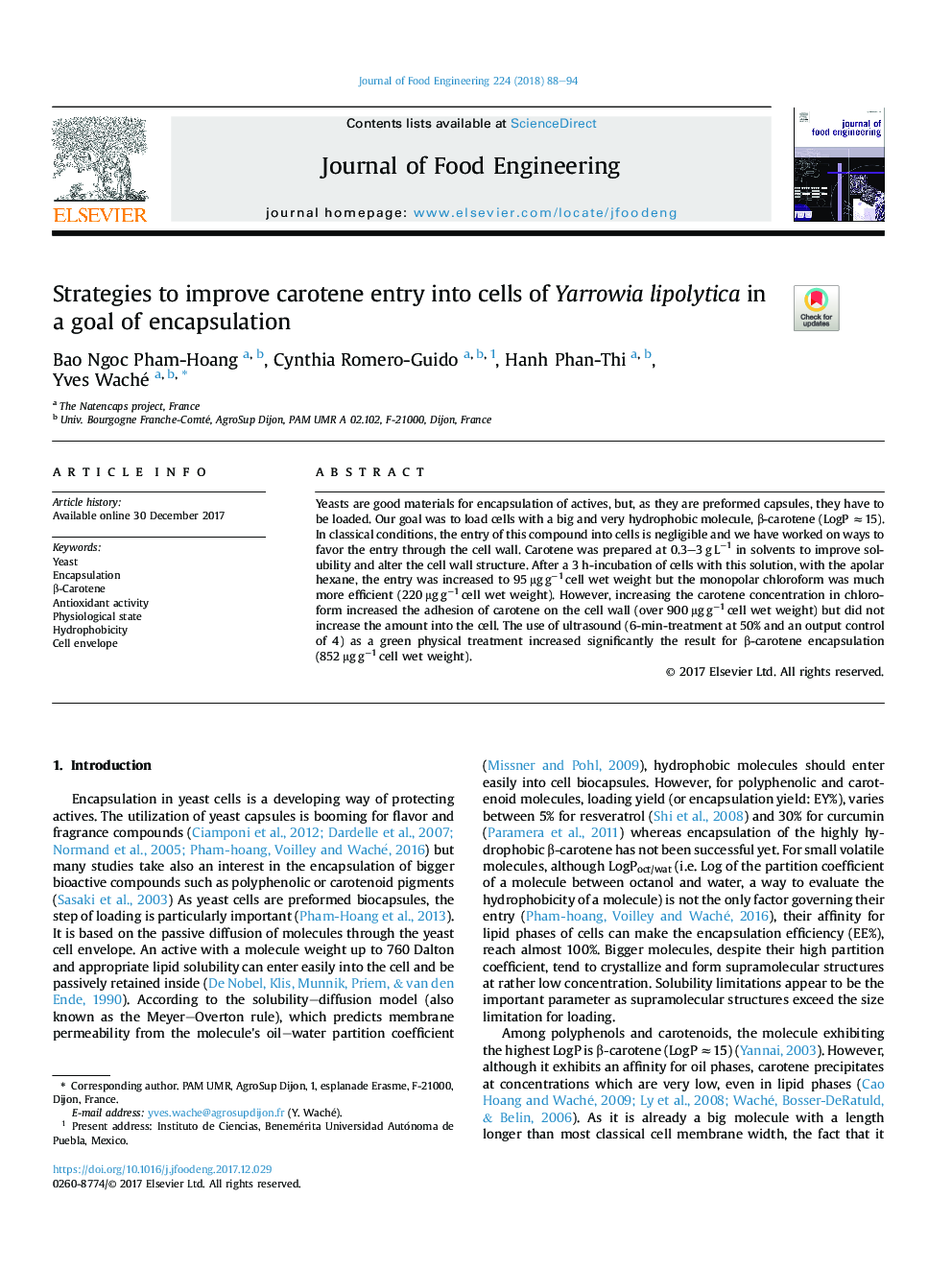| Article ID | Journal | Published Year | Pages | File Type |
|---|---|---|---|---|
| 6664680 | Journal of Food Engineering | 2018 | 7 Pages |
Abstract
Yeasts are good materials for encapsulation of actives, but, as they are preformed capsules, they have to be loaded. Our goal was to load cells with a big and very hydrophobic molecule, β-carotene (LogP â15). In classical conditions, the entry of this compound into cells is negligible and we have worked on ways to favor the entry through the cell wall. Carotene was prepared at 0.3-3â¯gâ¯Lâ1 in solvents to improve solubility and alter the cell wall structure. After a 3 h-incubation of cells with this solution, with the apolar hexane, the entry was increased to 95â¯Î¼gâ¯gâ1â¯cell wet weight but the monopolar chloroform was much more efficient (220â¯Î¼gâ¯gâ1â¯cell wet weight). However, increasing the carotene concentration in chloroform increased the adhesion of carotene on the cell wall (over 900â¯Î¼gâ¯gâ1â¯cell wet weight) but did not increase the amount into the cell. The use of ultrasound (6-min-treatment at 50% and an output control of 4) as a green physical treatment increased significantly the result for β-carotene encapsulation (852â¯Î¼gâ¯gâ1â¯cell wet weight).
Keywords
Related Topics
Physical Sciences and Engineering
Chemical Engineering
Chemical Engineering (General)
Authors
Bao Ngoc Pham-Hoang, Cynthia Romero-Guido, Hanh Phan-Thi, Yves Waché,
